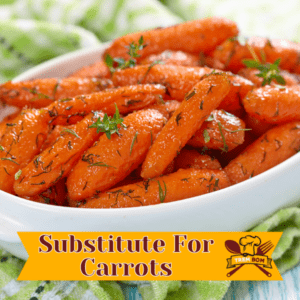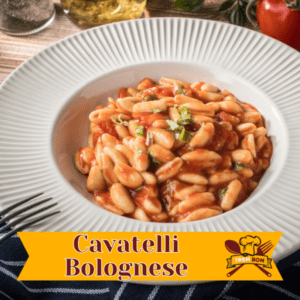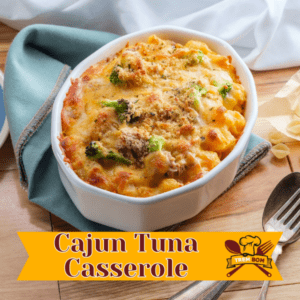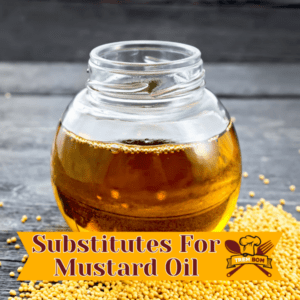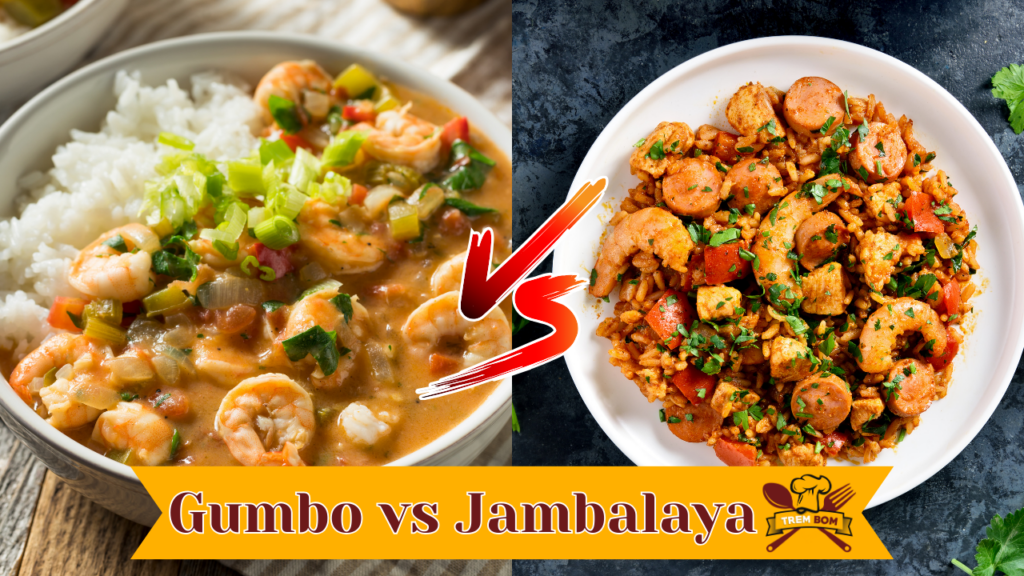
Intro to Gumbo | Intro to Jambalaya | Differences Between Gumbo and Jambalaya | Gumbo and Jambalaya Recipes | Common Misconceptions | FAQ
Gumbo and Jambalaya. Two dishes that sing the song of Southern cooking. They’re as different as day and night yet so similar it’s like looking in a mirror. Both dishes are a straight-up Southern comfort food bonanza, steeped in history and filled to the brim with flavors that’ll have your taste buds doing a happy dance. And let’s not forget the stars of the show – andouille sausage and cajun seasoning, two ingredients that could bring any dish to life. You can almost hear the sizzle of the sausage and the sassy kick of cajun seasoning just thinking about it!
To add to the gumbo vs jambalaya showdown, these hearty stews tell tales of cultures colliding, with nods to French, African, and Native American cooking traditions. Oh, and did I mention the diced tomatoes? They bring in a fresh burst of color and tang, adding to the fireworks of flavors. The South ain’t just about sweet tea and porch swings, ya know. It’s about a smorgasbord of flavors, served up in dishes that fill your belly and warm your heart.
Now, if your mouth ain’t watering yet, you’re probably made of stone. But hang tight, we’re just getting started. Let’s take a deeper dive into the world of gumbo vs jambalaya. Buckle up, because you’re in for a flavorful ride.
An Introduction to Gumbo: The Creole Stew Masterpiece
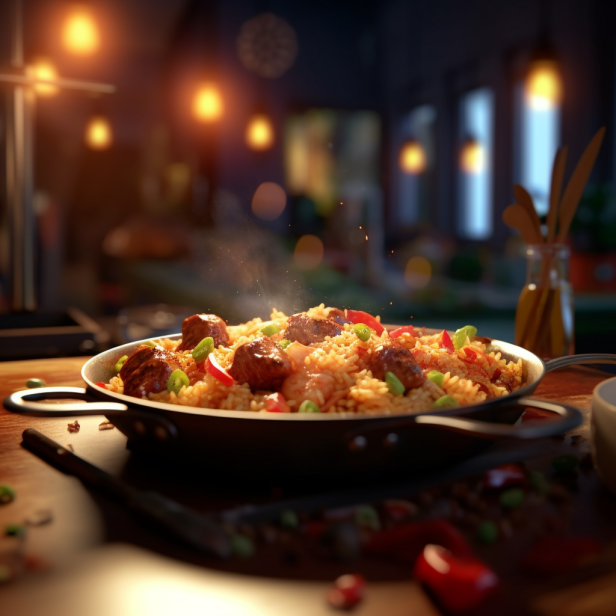
Let’s kick things off with gumbo, a dish that’ll have you dreaming of Mardi Gras. It’s one of those dishes from Louisiana that’s steeped in tradition, filled with history, and packing an array of flavors that are as diverse as the people of the Pelican State. A bowl of gumbo is just like a big, warm hug from the South.
Origins and Basis of Gumbo
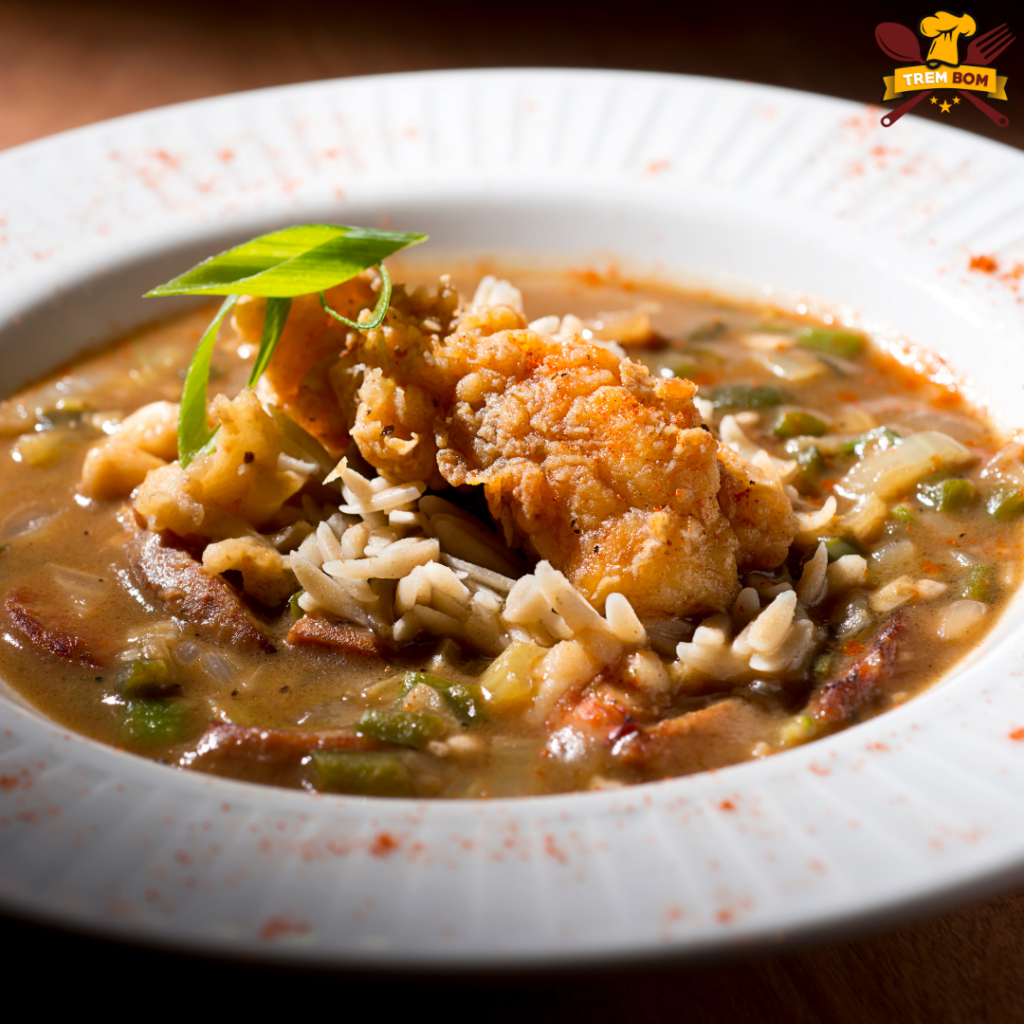
So, where did gumbo come from? That’s a tale that takes us way back to West Africa. The name “gumbo” comes straight from the Central Bantu word for okra, “kingombo.” Now ain’t that a fun fact? Just like a good pot of gumbo, this dish is a melting pot of influences. No two pots of gumbo are the same, and that’s because it draws inspiration from a slew of culinary styles. However, the guiding star in this galaxy of gumbo goodness is Creole cuisine, a style that’s as rich, diverse, and full-flavored as the dish itself.
The ingredients that make up a traditional gumbo recipe are as varied as the history of the dish. Some like it with chicken, others swear by seafood, while some folks might throw in whatever they have lying around in the fridge! It really is Southern cooking at its most versatile!
Gumbo Served With Rice
Alright, now let’s move on to how gumbo is typically served. Grab a bowl and get ready for something special. Gumbo is traditionally served up with a big ol’ helping of hot, long-grain, white rice. Just like Fred and Ginger, the two go together like a dream!
A pot of gumbo generally starts with a foundation of what some folks call the “holy trinity” of Southern cooking: onions, bell pepper, and celery. This is all simmered up with a range of meats, seafood, and/or poultry in a thickened stock. Though it can vary from pot to pot, the base of a good gumbo always returns to that thickened stock, the cornerstone of the vibrant flavors in this Southern classic.
Gumbo Flavors and Thickeners: Roux, Okra, and Filé
Now, let’s rap about gumbo’s secret to its thick goodness. We’re talking roux, okra, and filé. The roux, pure genius, is simply flour and fat cooked together. Seems simple, but don’t be fooled! It’s the thickening power of this everyday mix that gives gumbo its hearty consistency. But wait, there’s more.
Enter okra. Not just a green veggie, its name is the West African word for okra. When it’s tossed in the pot, it works magic, thickening the brew. And let’s not forget filé. This dried and powdered sassafras leaf ain’t just for root beer, my friend. It’s a gift from Native Americans, giving gumbo that extra layer of flavor and thickness. Round it off with some diced ham, and you’re in flavor heaven.
Comparing Cajun and Creole Gumbo Varieties
Before we get too comfortable, let’s shake things up with a little gumbo rivalry. We’re comparing Cajun and Creole gumbo, folks. Both startin’ with a roux and maybe throwing in okra or filé powder, but then they go their separate ways. Cajun gumbo, it’s got a soft spot for chicken or sausage, heavy on meat hailing from the Cajun dish tradition. Creole gumbo, on the other side of the track, often uses shellfish, and don’t forget the tomatoes! That’s right. Creole gumbo has the tomatoes that Cajun gumbo skips. All part of the fun and flavor of Southern cuisine.
How to Make a Delicious Gumbo Dish
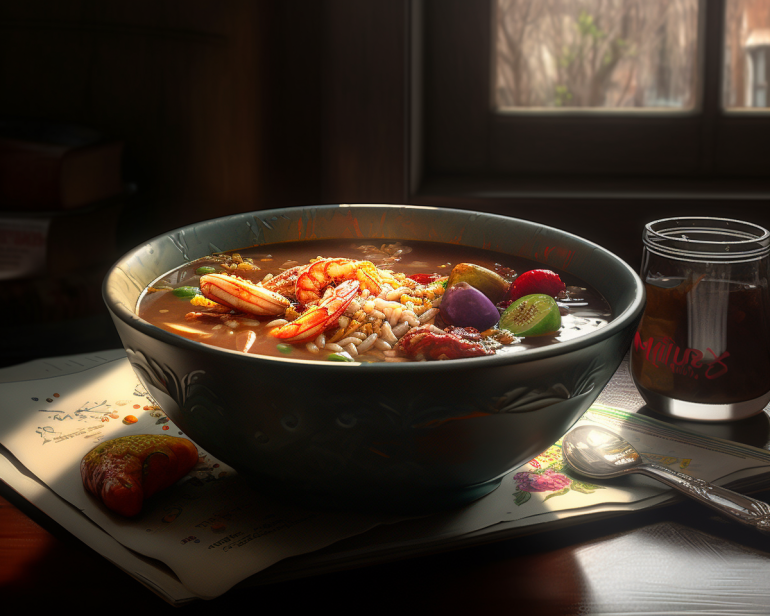
So, you’re ready to make your own gumbo? Great! First off, get your ingredients together. You’ll need your roux, okra, and filé, and don’t forget that diced ham. Remember what we said about it, it’s a flavor powerhouse in gumbo.
Start by cooking your roux, slowly, until it’s brown and smells nutty. Add your veggies: onions, bell peppers, and celery – the holy trinity of Southern cooking. Mix in your chosen meats. And finally, add in the okra and simmer until it thickens. Near the end, toss in the filé for an extra boost. Serve it up with rice, and you’ve got yourself a delicious gumbo dish.
Getting to Know Jambalaya: The Cajun Sensation
Jambalaya! Ah, just the word conjures up all kinds of Southern charm. Comfort food at its best, folks, with a melody of flavors that’ll have your tongue doin’ a happy dance. It’s got the spicy andouille sausage, the rich Cajun seasoning, and those homey diced tomatoes. Time to dive in!
Jambalaya’s Beginnings and As a Rice Dish
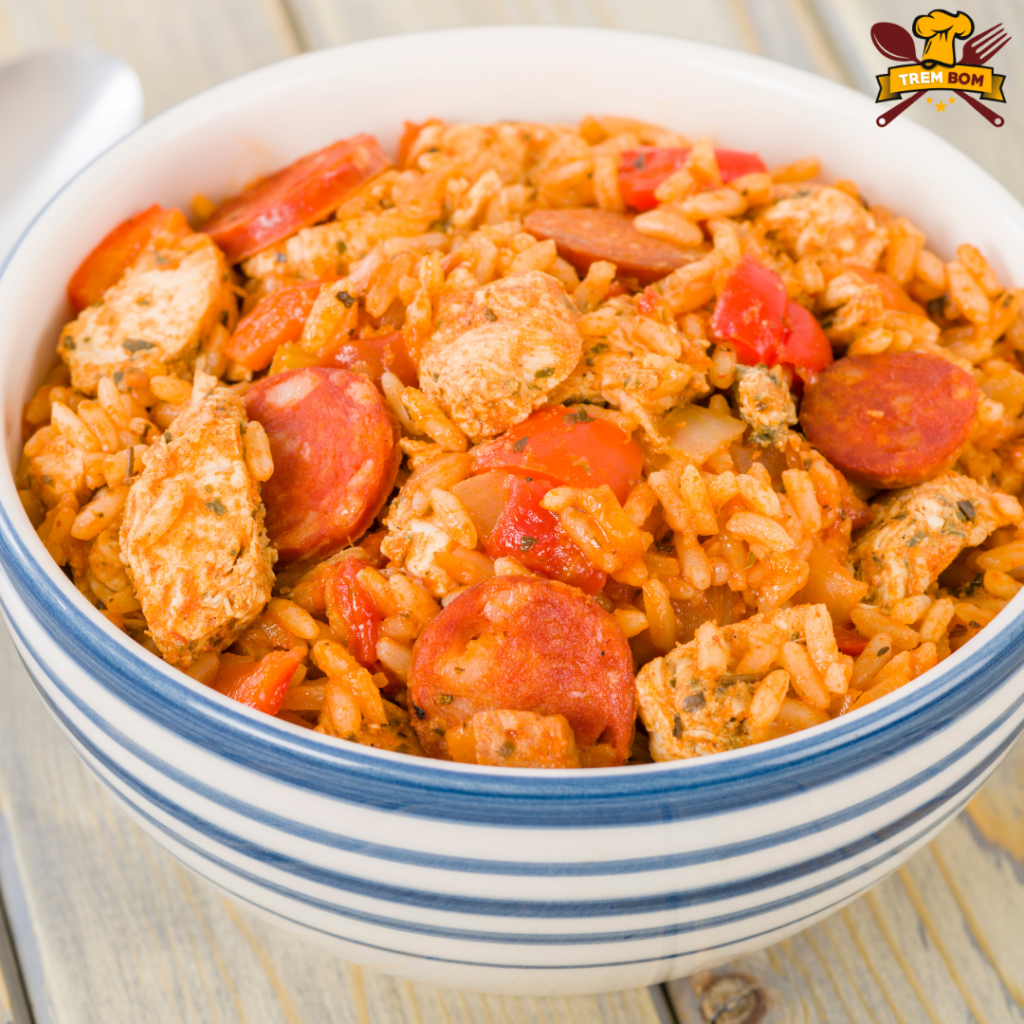
The great thing about jambalaya is it’s kind of a one-pot wonder. The rice is cooked right in there with everything else, soaking up all the flavors. No sidelines for this grain, it’s a key ingredient, it’s the star, right up there with the meat and veggies. So how’d we get here?
Turns out, jambalaya’s got roots in Spanish paella, but don’t be fooled, this ain’t no copycat. It’s been given a Louisiana twist, swapping out traditional ingredients for local favorites, like okra, tomatoes, beef broth, and that famous Cajun seasoning. A little tomato paste can help to cook the rice, giving it that deep red hue that lets you know this is Cajun jambalaya. And what you get is a savory, spicy rice dish that’s one of a kind.
Distinguishing Flavor Profiles of Jambalaya
When it comes to munching on some good ol’ Southern comfort food, y’all gotta know your jambalaya. And if you’re hankering for jambalaya, the flavor’s the name of the game. One of the main things that jazz up the jambalaya’s flavor profile is the Cajun seasoning. We’re talkin’ about a spicy little number that packs quite the punch! A sprinkling or two of this blend of pepper, garlic, oregano, and other herbs and spices, and you’re already halfway to flavor town. Not to mention, it’s a crucial component of both the creole and Cajun versions of the dish.
Of course, the other ingredients aren’t layabouts either. Chicken thighs, andouille sausage, garlic, onions, celery, green peppers, diced tomatoes and long-grain white rice all play their roles. The combination of these components alongside the seasoning, well, let’s just say your taste buds are in for something special. Heck, just reading about it’s making my mouth water!
Comparing Cajun and Creole Jambalaya Styles
Now, let’s take a little stroll down to the two main neighborhoods of Jambalaya City: Cajun and Creole. Sounds fancy, right? Well, they’re both a sight to behold on your dinner plate, that’s for sure. Creole jambalaya, also known as red jambalaya, struts around flaunting its tomatoes like Mardi Gras beads. Brown jambalaya, on the other hand, ain’t got time for tomatoes; it’s all about that deep, smoky flavor. Whether it’s chicken and sausage dancing around in the pot or seafood stealing the spotlight, you’re guaranteed a Fat Tuesday feast any day of the week. Sure, neither style is thickened with roux, but both types got their own unique swing and flavor. If you’ve got Creole seasoning handy, remember, a little bit goes a long way. And if you’re walking down the Cajun or Creole street, make sure you got your Cajun seasoning right there with you.
Jambalaya Cooking Instructions for Beginners
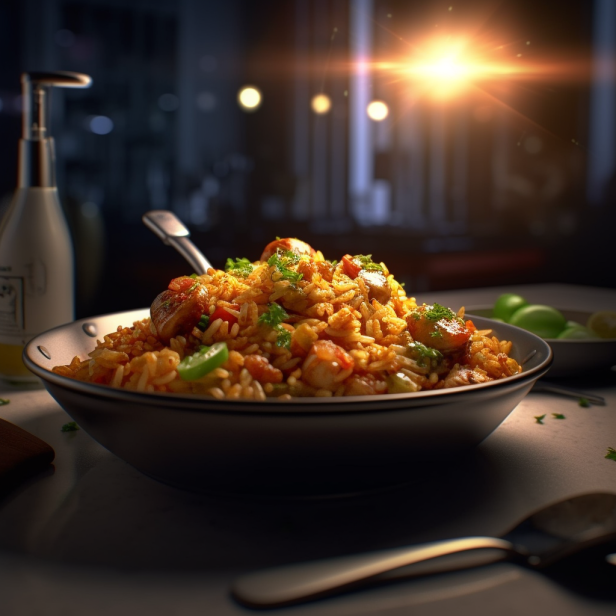
Alright, so you’re all set to whip up a pot of jambalaya but you’re just a beginner? No worries, my friend, I’ve got you covered. Both Cajun and Creole styles aren’t too tricky to tackle once you know the steps. First things first, you’re gonna need a Dutch oven. Why? Well, it ain’t for decoration, I can tell ya that much. It’s the best thing for cooking up a storm and ensuring even heat distribution. It’s also pretty versatile so you can sauté, simmer and serve in it.
Start by heating up some oil and getting your meat nice and browned. Then toss in your holy trinity – onions, celery, and green bell pepper – and let it all mingle. Feel free to add in your sausage, tomatoes, and, of course, don’t forget that Cajun seasoning! From there, it’s just a matter of letting everything cook until well blended. If you don’t want to babysit the stove, consider using a sheet pan. This multitasker goes from oven to table with minimum fuss, allowing you to get the rest of the meal together while the jambalaya does its thing.
The Distinct Differences between Gumbo and Jambalaya
Gumbo vs Jambalaya might be two of the most famous dishes from Louisiana, but don’t go mistaking one for the other. Yeah, they might share some ingredients, but when it comes down to it, they’re as different as night and day. Now, Gumbo, that’s more like a soup or stew with more liquid than rice. It can be loaded up with meat or seafood, but the rice is always cooked separately. Jambalaya, on the other hand, has the rice cooked right in the pot with everything else.
The origins of these dishes are different too. Gumbo’s got some Spanish settlers in its family tree while Jambalaya, well, it’s been keeping company with some French folks. In gumbo, it’s all about the roux, used to thicken gumbo up. Jambalaya doesn’t bother with all that. It’s got more of a simple, straightforward charm. When it comes to serving, gumbo likes to sidle up next to a bowl of rice, while jambalaya’s a one-pot wonder. So, when you’re next in the mood for some Cajun cooking, just remember, gumbo and jambalaya might be cut from the same cloth, but they sure ain’t the same dish.
Ingredient Comparison
When it comes to ingredients in Gumbo vs Jambalaya, there’s some common ground but also some significant differences. Let’s start with what they share. Both dishes got the holy trinity: onions, celery, and bell peppers. They also fancy some chicken and sausage. And let’s not forget the star of the flavor show, Cajun seasoning. This zesty blend of herbs and spices adds that distinctive Southern twang to both dishes.
But it ain’t all shared territory. Gumbo, for instance, usually includes okra or roux for thickening. Jambalaya, on the other hand, doesn’t use any thickeners. Instead, it lets the long-grain white rice soak up all the flavors. Then, there’s the matter of the seafood. Shrimp and other seafood often find their way into both dishes, but it’s more common in Gumbo. So, whether you’re hankering for Gumbo or Jambalaya, knowing your ingredients is key to crafting an authentic Southern dish.
Methods of Cooking: Gumbo vs Jambalaya
When it comes to cooking up these two classic Southern dishes, their methods, like their ingredients, diverge. Gumbo, a rich and hearty soup, simmers low and slow. The key here is patience, letting everything meld together to reach that savory perfection.
Jambalaya, on the other hand, is a one-pot wonder. Rice, protein, and veggies all cook together, absorbing a bold cajun seasoning. The result is a flavorful, stick-to-your-ribs comfort dish. The beauty of both dishes is that they are versatile and forgiving, making them perfect for beginners to seasoned cooks.
Exploring Gumbo and Jambalaya Dishes
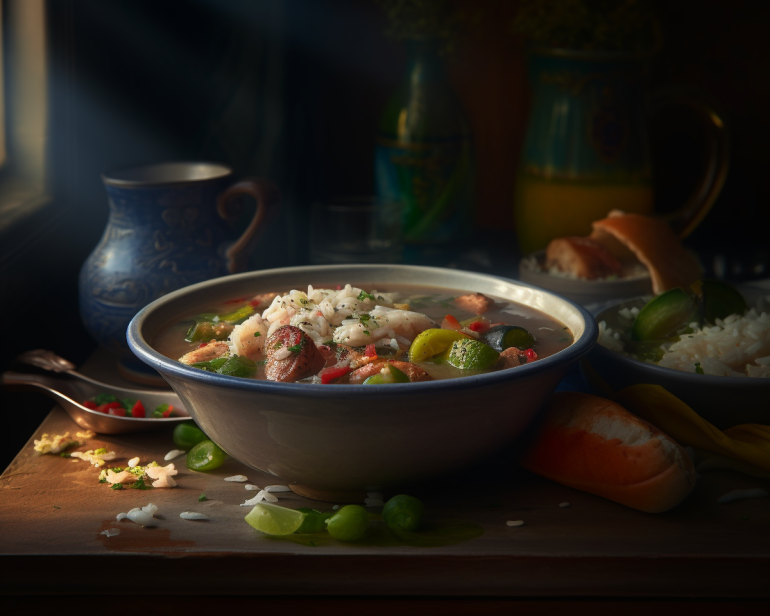
These two dishes are more than just food, they’re a story of Southern heritage, resilience, and damn good cooking. Gumbo vs jambalaya represent the melting pot that is Southern culture. African, French, Spanish, and Native American influences all come together in these sumptuous dishes, just as they did in the history of the South.
Gumbo, with its mix of any protein you fancy and okra that gives it its velvety texture, and Jambalaya, with its spicy sausage, tender chicken and fresh seafood, are beloved by Southern folks and anyone else lucky enough to try them. And as with any good recipe, everyone’s got their own unique spin on these classics.
Best Gumbo and Jambalaya Recipes
Now, if you’re aiming to whip up your own pot of Southern magic, you’ll need some stellar gumbo and jambalaya recipes on hand. For gumbo, folks might go for a seafood gumbo simmered with crab and shrimp, or a hearty chicken gumbo thick with dark meat and smoked sausage. Start with a dark roux, add in your holy trinity of finely chopped onion, celery, and bell pepper, then let that pot simmer with a simmering mix of chicken stock and cayenne pepper.
Jambalaya recipes, whether cooked on a stovetop, in the oven, or in a campfire pot, usually combine a mix of proteins with the right dose of spicy flavors. And for a modern twist, Jambalaya baked on a sheet pan is a favorite among busy cooks. The key to both dishes is about layers of flavor. Don’t rush it. With gumbo, it might take longer than 30 minutes, but good things take time, remember?
Curating the Perfect Side Dishes for Gumbo and Jambalaya
Now, both these dishes can stand on their own, but magic happens when you pair ’em with the right sides. You might have gumbo poured over a mound of fluffy white rice or a hunk of cornbread to sop up all those delicious juices. Jambalaya, already studded with rice inside the dish, calls for a simple side like a cool, crisp green salad or some buttery garlic bread.
Remember, your sides should complement and not overshadow the rich flavors of the gumbo and jambalaya. So, when you’re curating your side dishes, think of balance, taste, and texture. Now, go on and start cooking!
Gumbo versus Jambalaya: Addressing Common Misconceptions
Let’s set the record straight – gumbo and jambalaya ain’t the same. They might share a few common ingredients, but their flavor profiles, cooking methods, and overall dish characteristics starkly contrast. Gumbo is a hearty soup, while jambalaya is more like a pilaf. Gumbo’s heart is in the roux while jambalaya puts the ‘jamb’ in jambalaya.
The most common misconception? That gumbo and jambalaya are interchangeable. They ain’t. Each has its unique identity and flavor that’s worth celebrating, making them both mainstays in the Southern culinary tradition. So, the next time you see ’em on a menu, remember, they’re as different as night and day, but equally mouthwatering.
Dispelling the notion of Gumbo as Jambalaya and Vice Versa
Alright folks, let’s set the record straight once and for all. Gumbo vs Jambalaya, though they both hail from the vibrant South, are not interchangeable! Sure, the two dishes might share some common ingredients, such as chicken, sausage, and vegetables, but the flavor profiles and preparation methods make a world of difference.
Getting these two mixed up is like calling a frog a toad, or a violin a fiddle! It’s easy to understand why there’s confusion. Both dishes come with rice and have their sassy Cajun and Creole versions to boot. Not to mention, they’re both known for warming the belly in that homey, comforting kind of way. But remember, a boxer isn’t a brief and a Corvette isn’t a Camaro – each has its own distinct attributes and characteristics that make it special.
Jambalaya vs Gumbo – Two Vibrant Chapters of Southern Cuisine
Well, folks, that’s the long and short of the bayou twins – gumbo and jambalaya. Y’see, these dishes are both inextricably linked with the state of Louisiana – a result of the Creole traditions, Louisiana’s French influence, and the arrival of Spanish colonists and West African slaves in the 18th century. Ever been confused about which is which? Let’s lay it down. Gumbo is a stew filled, no, practically brimming with smoky tasso, salt meat, green bell peppers, and who knows what else. The role of rice? Oh, gumbo is served over rice, not with it like some might think. The punchline? Rice is not cooked within gumbo, rather it’s served atop the rice. Quite the spectacle for a state dish, ain’t it?
On the other side of the river, we’ve got the jambalaya – a one-pot rice dish spiced with tomato sauce, smoked tasso ham, andouille sausage, or the ol’ reliable pork butt. This is a dish you’d hanker for on any night of the week. Let the dinner recipes be damned, a skillet with jambalaya can often feed a crowd. Steeped in Louisiana Cajun lore, a hearty scoop of jambalaya is often complemented with a bottle of hot sauce and a sprinkling of pepper flakes. Packed with flavor and aroma, it’s the quintessential portable feast of southern Louisiana. When it comes to eating gumbo and jambalaya, you’d best remember the powdered sassafras for the former and the smoked pork sausage for the latter.
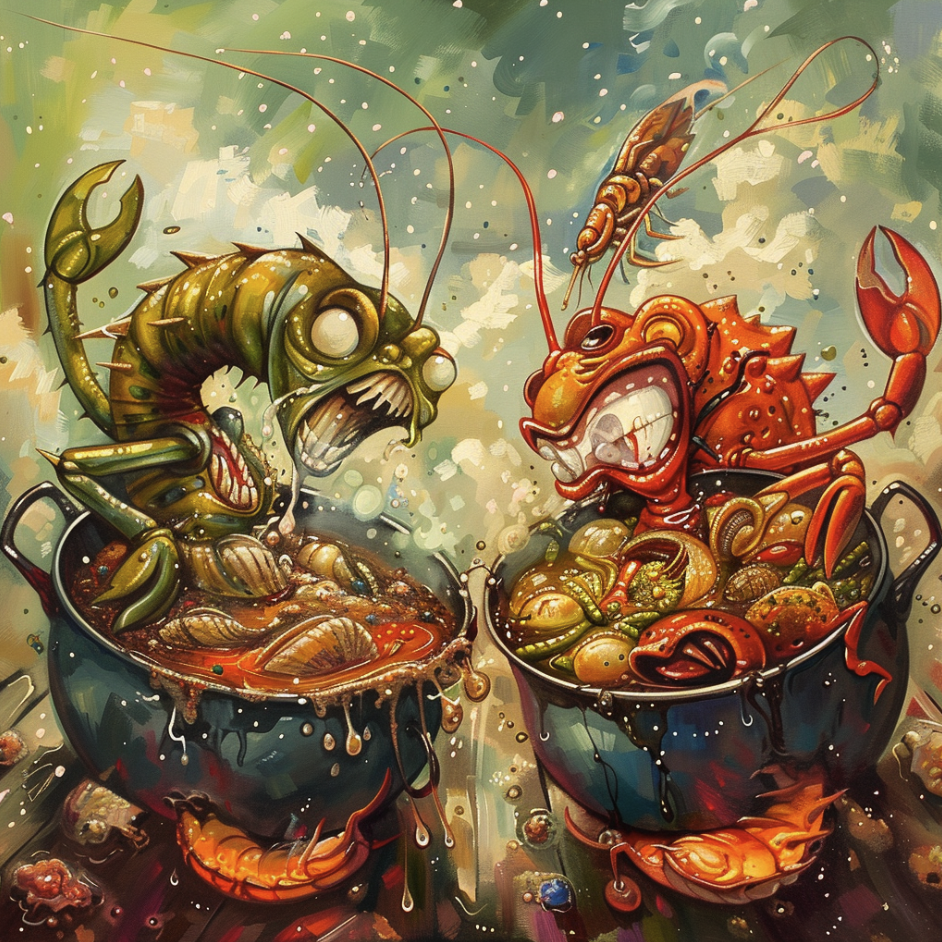
Gumbo vs Jambalaya FAQ
Q: What is the difference between gumbo and jambalaya?
A: Gumbo and jambalaya are both popular dishes in Creole and Cajun cuisine. However, there are some key differences between the two.
Q: Can you explain the terms Creole and Cajun?
A: Creole and Cajun are terms used to describe different cultures and cuisines in Louisiana. Creole cuisine typically refers to the city-based, urban cooking that blends influences from various cultures such as French, Spanish, African, and Caribbean. Cajun cuisine, on the other hand, originated from the rural areas of Louisiana and is heavily influenced by French and Acadian cooking.Q:
Q: Is jambalaya a stew?
A: Jambalaya is often referred to as a “one-pot” dish. While it may have some similarities to stews, it’s not typically considered a stew. Jambalaya is a flavorful rice dish that combines meat, vegetables, and spices all cooked together in one pot.
Q: What is a roux?
A: A roux is a mixture made from equal parts flour and fat. It is commonly used as a base for thickening sauces, soups, and stews in Creole and Cajun cooking.
Q: Do gumbo and jambalaya both use bell peppers and celery?
A: Yes, both gumbo and jambalaya commonly include bell peppers and celery as part of the “trinity,” which refers to a combination of onions, bell peppers, and celery used as a flavor base in many Louisiana dishes.
Q: What is the main difference between jambalaya and gumbo?
A: The main difference between jambalaya and gumbo is in their consistency. Gumbo is a thick stew made with a roux and often includes okra or filé powder as a thickener. Jambalaya, on the other hand, is a rice-based dish with a drier texture compared to gumbo.
Q: Can you explain the term filé powder?
A: Filé powder is ground sassafras leaves that are used as a thickening agent in gumbo. It adds flavor and helps to give gumbo its characteristic texture.
Q: What is the role of sausage in gumbo and jambalaya?
A: Sausage is a common ingredient in both gumbo and jambalaya. It adds flavor and richness to the dish, complementing the other ingredients.

